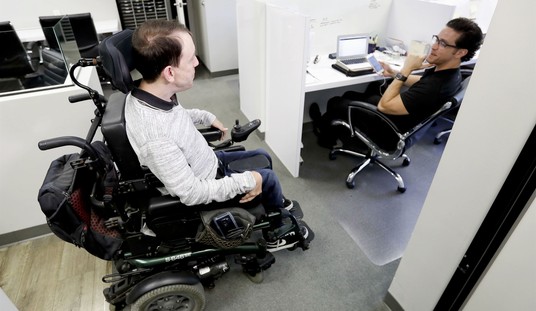(DISCLAIMER: promoted not as an endorsement of the message but for sake of the contacts and info on how to help)
If you’ve seen the news and photos of the Houston and South Texas area, you probably want to help, but what can you do? What are the best investments for your time and money? What organizations can you trust, and which ones should you avoid?
Last year, my grandmother’s house in Baton Rouge was destroyed when a catastrophic rainstorm caused 4.5 feet of water to flood her house in under one hour. After family friends stepped up to help my grandmother rebuild her house, my mother and I, who both live far away in Washington, D.C. and Tennessee, spent a week volunteering with Samaritan’s Purse. Based on our experiences of serving after a catastrophic flood and helping a family member get back on her feet, here are the best ways to help.
1. Donate
• Samaritan’s Purse
Known for the Christmas shoebox program, Samaritan’s Purse also has a disaster relief and recovery arm. As noted above, I volunteered with them last year and highly recommend the experience. They already have teams on the ground and will probably be there for months as emergency response turns into disaster recovery. Samaritan’s Purse also has a branch that assists in rebuilding efforts in some communities.
• Cajun Relief Foundation
Last year, the Cajun Navy won the hearts of America as grassroots volunteers used personal boats and GPS apps to rescue people stuck in the South Louisiana flood. Despite battles with state government over training and regulations, they’re still in business. They are taking the lessons they learned in Louisiana and are helping out in Texas.
•Team Rubicon
Founded by veterans in the aftermath of the 2010 earthquake in Haiti, Team Rubicon utilizes the critical skills of veterans and first responders to help in disasters. They have deployed water rescue teams to Houston.
• Local Food Banks and Animal Shelters
Local organizations can respond immediately. Food and diaper banks provide emergency relief because they are already on the ground and have access to supplies. According to the Houston Food Bank, every $1 in donations can provide three meals to a displaced person.
Local animal shelters often see urgent and immediate needs as natural disasters can separate pets from families. Animal welfare organizations are usually stretched on a normal day, yet they are the first places that local authorities turn to for assistance with both domestic pets and agricultural animals. Animal shelters that are helping include Austin Pets Alive!, Houston Humane Society, Forgotten Dogs of the 5th Ward Project, SPCA of Brazoria County, which is operating a companion animal shelter for pet owners, Harris County Animal Shelter, BARC Houston, which has a mobile shelter for pets, and San Antonio Humane Society, which also has a pet shelter for those displaced.
• Other Disaster Relief Organizations
Other respected organizations that are helping include Convoy of Hope, Salvation Army, Southern Baptist Disaster Relief, and Catholic Charities.
2. Send a care package to a loved one in South Texas.
If you have a friend or family member in the affected area, a care package of flood-recovery supplies can be a godsend. If they had any amount of flooding or water damage to their home or business, it’s a race against time to prevent mold from growing. Now that a majority of American households have an Amazon Prime account, emergency supplies can be sent with a few clicks.
You can help loved ones by sending items that will quickly be in short supply:
- Fans
- Extension cords
- Garbage bags
- Hand sanitizer
- Disposable gloves
- Wet wipes
- Non-perishable food
- Bottled water
- Cleaning supplies
- Paper towels
As demolition and rebuilding efforts start, mold removal, construction and DIY supplies will be hard to find in stores, especially if those stores were flooded. Critical items will include:
- Respirator masks
- Work gloves
- Tyvek suits
- Fiberlock Shockwave (or another approved chemical for removing and preventing mold)
- Lawn and garden sprayers (for spraying mold preventative)
Based on the similar flood in Baton Rouge, long-term housing will be the biggest obstacle for months to come. One year after that flood, hundreds of people are still living in tents or RVs in their backyards because of problems with FEMA’s Shelter at Home program. If your loved one’s housing in Texas was destroyed or needs major repairs, consider sending camping supplies that can help as repairs are slowly made.
3. Volunteer
Today, FEMA administrator, Brock Long noted, “We need citizens to be involved. This is a landmark event. We have not seen an event like this.”
In the months, and possibly years ahead, many communities in South Texas will need to completely rebuild. If you are retired, in college, or have a flexible job and enjoy DIY, there will be multitudes of volunteer opportunities in the next few months. While these programs can take days or weeks to set up, there will be many ways to provide assistance in person.
• Samaritan’s Purse
Based on my experience with Samaritan’s Purse, I highly recommend volunteering with them. They work with local churches to provide food and housing for volunteer teams. They also have systems to screen and evaluate those seeking assistance. Most importantly, they make sure volunteers are safe and have the correct equipment they need to work.
• Your Church or Denomination
Many church denominations have established disaster relief operations that go unnoticed. Check with your church or denomination website to see if they will be responding to Hurricane Harvey. My family was surprised to run into operations from my denomination, Presbyterian Church in America, in Baton Rouge. After a decade attending PCA churches, we had no idea that they responded to emergency situations.
Avoid the Red Cross!
Please ignore the calls to donate to the Red Cross. You will soon be inundated with ads to give. However, remember that the Red Cross has been heavily criticized for their wasteful spending and massive inefficiencies during recent disaster responses including the 2010 earthquake in Haiti, Hurricane Sandy in 2012, and last year in Baton Rouge’s floods.
After a report from ProPublica and NPR found that 25% of money donated to help in the 2010 Haitian earthquake, Senator Chuck Grassley (R-IA) launched his own investigation and found even more inefficiencies. According to the Huffington Post:
The Red Cross claimed 91 percent of all donations went directly to charity. ProPublica and NPR found that in 2010, only 60 percent did. The remaining 40 percent of donations funded Red Cross program management and overhead costs. Haitians told reporters that aid the Red Cross promised was simply never delivered.
Last year after the Baton Rouge floods, they also came under fire for turning away volunteers and donations due to their rigid bureaucratic system with local officials saying they “Failed for 12 Days.”
Sadly, these reactions mirror those I saw when volunteering with the Salvation Army after tornadoes tore through the Southeast in the deadly April 2011 storms. With all the wonderful organizations serving locally and committed to disaster response, be a savvy donor and avoid the Red Cross.












Join the conversation as a VIP Member